All your questions on baking with almond flour answered here! This instructional article takes the guesswork out of how to bake with almond flour, so you can indulge in low carb treats all year long. Take it from this self-proclaimed Almond Flour Wizard!
I’ve updated this post on how to bake with almond flour, as I’ve got a lot more good information to add!
I’ve been baking with almond flour for more than 8 years now and I have to say, I have gotten pretty good at it. I’ve been called The Keto Baking Queen by many people and it’s a title I’ve earned through many years of trial and error. I am proud of my low carb baking skills, and I find myself improving and growing on almost a daily basis. So I decided it was high time to update this article on How To Bake with Almond Flour so you can benefit from my experience!
Because almond flour is the basis of many of my keto recipes, I am highly comfortable with it. It’s perhaps one of the most versatile of the low carb flours, and works well in low carb cookies, cakes, and breads. It’s great for low carb pie crust too! You just have to know how to treat it, what to look for, and how to adjust if it doesn’t work quite as you expect.
So let’s get started. Answering your burning questions about baking with almond flour, right here, right now.
Almond Meal vs. Almond Flour – What’s the difference?
Let’s clear up any misconceptions right now that all almond flour is created equal. I get this question a lot, and the answer is a resounding NO! Sure, they are both made from ground almonds, but anything that calls itself almond “flour” should be finely enough ground that you can make fine-textured cakes and bread that rival their wheat-based counterparts.
It should also be blanched almond flour, so that you get no little dark bits of skin. There are several really good brands of finely ground almond flour, including Honeyville, WellBee, and Anthony’s. My favourite is Bob’s Red Mill Super Fine Blanched Almond Flour. Costco also sells good almond flour at a reasonable price, under their Kirkland brand, which I believe it actually produced by Honeyville.

Almond meal is much more coarsely ground and if you place the two side by side, you can really see the difference. It’s still often good enough for baked goods where texture doesn’t matter quite as much, like low carb muffins or crackers. It can be both blanched (skins removed) and un-blanched (skins left on). And since it’s often less expensive, it may be preferable to almond flour at times. You don’t even have to buy almond meal, you can make it yourself if you have a good food processor.
So, if you’ve ever made an almond flour recipe and had issues with the final product holding together, leaching out the oils or butter, or not rising properly and holding its shape, a likely culprit is that you are using the coarser almond meal, instead of almond flour. The larger particles mean less cohesiveness for the finished product. For some things, it may not matter but for cakes and fine-textured items, it most certainly does. I don’t even keep almond meal around anymore, I use almond flour for everything.
Subbing Almond Flour for Wheat Flour
You’re going to hate me for saying this, but there is no easy formula here. It all depends on what you are trying to make. Cookies are dense and crunchy whereas cakes should be light and fluffy, and they are going to take very different ratios of almond flour to other ingredients.
I wish I could tell you it was as simple as swapping almond flour for wheat flour at a 1:1 ratio. But it’s not and when you think about it, you can see why. Almond flour is basically ground nuts, full of fat and moisture, entirely without gluten and not nearly as powdery, fine and dry as wheat flour. So there are a whole range of factors you need to account for when adapting a wheat-based recipe to low carb and gluten-free. You need to consider the texture, density, and moisture content of the baked good you want to make over.
A cup of almond flour also differs significantly in weight from a cup of wheat flour. Out of curiosity, I just went and measured the two (literally right now, as I am writing this) and a cup of wheat flour came to 5 oz, while a cup of Bob’s Red Mill blanched almond flour came to 3.75 oz. That’s more than a full ounce difference!
If you are a total beginner with almond flour, I’d actually suggest you stick to some tried and true recipes to get a feel for how it behaves and the overall proportions. That’s certainly how I started, 2 and 1/2 years ago. Once you have a good sense for almond flour recipes, you will find it easier to strike out on your own and adapt some family favourites.
Let me tell you what I do, when I start making over a recipe. Take, for example, my Almond Crusted Butter Cake. The original wheat-based recipe took about 50% more butter and 50% less flour. Knowing that almond flour has a higher fat content but is less dense than wheat flour, I basically switched this ratio around. Then I doubled the baking powder and added in whey protein to make up for the lack of gluten and to give the end result more structure. Then I crossed my finger, said a little prayer, and popped it in the oven. And it has since become one of my all-time favourite keto cake recipes!
You can also increase the eggs for more protein and structure, but too many eggs can give the final result a rubbery texture or make it too “wet” and gummy in the center. I usually start with one more egg, and then add another closer to the end if the batter seems too heavy and thick.
One important thing to note when adapting wheat flour recipes is that your almond flour batter will almost always be thicker. Don’t expect it to look exactly like a wheat-based batter and resist the urge to thin it out with liquids, or you will likely end up with a soggy mess.
Other Nut Flours and Meals
People often ask me if they can use other nut flours and meals instead. I give the answer to this question as a tentative “yes”, with several caveats.
First off, I don’t know of too many other nut “flours” that are as finely ground as true blanched almond flour, so if texture and consistency of the end result is dependent on the grind, then you may have some difficulty. Some keto muffins, scone and cookie recipes lend themselves admirably to a simple swap of one nut flour/meal for another. Several of my biscotti recipes could be made with hazelnut meal instead of almond flour, as could some cracker and cookie recipes. And my Hazelnut Chocolate Chip Bundt Cake could easily be made with another nut meal of choice (walnut, almond, pecan…all of those would do well).
But finer cakes and cupcakes might become too crumbly, to coarse and possibly leach out oil during baking if you attempt it with anything but the most finely ground flours. If you want a fine crumb on your cake so that no one can guess it’s low carb, then you want finely ground almond flour.
Sunflower Seed Flour
This is, in my opinion, the best nut-free substitute for almond flour, because it can be ground quite finely. You can even make your own sunflower seed flour easily at home. Check out How To Make Sunflower Seed Flour here.
The funny thing about sunflower seed flour, though, is how it can turn green when it’s baked. This is a reaction with the leavening agents like baking powder and baking soda and it doesn’t mean the baked good has gone bad. To offset this reaction, you need about 1 tablespoon of acid like apple cider vinegar or lemon juice. In chocolate recipes, the brown colour covers the green and you don’t really need to worry about it.
Coconut Flour vs. Almond Flour
Inevitably when I make a keto recipe with almond flour, someone comes along and asks if they can make it with coconut flour. And vice versa. Here’s the deal:
You cannot sub coconut flour for almond flour as a direct 1:1 substitution. I cannot state this more strongly. Don’t even think about trying it or you will end up with hard, inedible thing that is only good for using as a hockey puck. Check out my article on Baking with Coconut Flour for more information.
Coconut flour is an entirely different creature than any flour based on tree nuts. It’s fine, powdery, dense and soaks up liquids like nobody’s business. It also requires more eggs and sometimes more other “binders” like xanthan gum, to keep the final product together. And you want to use WAY less coconut flour for a recipe than you would almond flour, sometimes as little as 1/3 to 1/4. In essence, if you choose to make a recipe based on almond flour with coconut flour, you will need to restructure the whole thing.
If I were to take one of my basic almond flour recipes and rework it for coconut flour, I would start with about 1/3 the amount of flour, twice the eggs, some xanthan gum, a little more leavening agent like baking powder, and then I would add my liquids like coconut or almond milk last and not all at once. I would add some liquid, work it in and see how thick the batter was, then add a bit more and a bit more until it felt right to me. Again, “right” in this case is likely be a thicker batter than anything wheat-based, so it take some experimenting to get it right.
One good thing about working with coconut flour (and almond flour) is that they don’t contain gluten so over-mixing is usually not an issue. On occasion, I’ve been making a coconut flour recipe and suddenly thought it needs another egg or two. I’ve added it at the very end and had no problems with the end result. In this sense, at least, coconut and almond flours can be very forgiving.
Peanut Flour vs Almond Flour
The best answer I can give you here is: maybe. Peanut flour comes in a variety of forms, including roasted (light and dark), unroasted, partially defatted and full-fat. I ordered some peanut flour once that was essentially just ground peanuts and it did well as a sub for almond flour in several recipes. But the defatted ones are a little bit like coconut flour, they are very fine and powdery and soak up a lot of liquid. So they are going to require some reworking of the basic recipe in some of the same ways as coconut flour, although to a lesser extent.
How to Measure Almond Flour
Always use the scoop and level method, unless the recipe indicates otherwise.
I always simply scoop the almond flour from the bag or the canister, and level it off with a knife or sometimes with my hand. I never try to jam pack my cups to get more almond in there, so all of my recipes will be written assuming you simply measure an unpacked scoop. A well-written recipe should specify if you should pack the ingredients, so assume not if it doesn’t say. Sadly, not all recipes are that well written these days.
Many gluten-free recipes are done by weight, not volume, because gluten-free ingredients can differ significantly by brand. I am making an effort to do this more often now, especially when the recipe is on the tricky side and precise measurements matter. I would suggest investing in a small kitchen scale if you want to be more accurate. I will always give measurements by volume, however, since I want my recipes to be as accessible to as many people as possible. Weight measurements are more accurate overall, but it doesn’t do me any good if the reader doesn’t own a kitchen scale!
How to make Almond Flour Bread
Looking for a firmer bread you can toast and slather with peanut butter? Yeah, me too. Almond flour is by nature moist so if you use it on its own, your end result can be more cake-y than you want it to be.
I find that adding a little bit of a denser flour, like coconut flour or oat fiber, can help stiffen the batter and thus firm up the bread. I used coconut flour successfully in my Low Carb Panini Bread Recipe. The trick is to not increase the other wet ingredients, so the addition of this flour helps dry out the consistency of your bread.
You can also try using a little oat fiber, which is made from the husk, or the “bran” of the grain and not the grain itself. However, it may contain a little gluten so it’s not idea for people with a gluten intolerance.
Many people add psyllium husk to low carb bread recipes as well, which can give it more of a yeast-bread like texture. But depending on the brand of it can also make it gummy and sometimes it has a purplish hue.
Using Protein Powder in Low Carb Baking
Why do I often use whey protein or egg white protein in my keto cakes and other baked goods? It isn’t, as some people think, to get more protein into my diet. I am an unabashed carnivore and consume plenty of protein.
It all comes down to the science of baking. Gluten is a protein and it’s part of what gives wheat-based baked goods structure, allowing them to rise and hold their shape. In gluten-free baking, adding in a dry protein can help make up for this. You can’t just add more egg whites because that will throw off the liquid to dry ratios. But you can easily swap out the whey for your protein powder of choice (hemp, soy, even egg white powder). The results may vary a little depending on the protein content per serving.
Freezing Almond Flour Baked Goods
With only a few exceptions, I would say yes, most almond flour baked goods are indeed freezer-friendly.
I have successfully frozen cakes, muffins, cookies, scones, and even some almond flour pie crust. I usually freeze after baking, and I freeze before I glaze or frost the baked good in question.
However, you can also freeze some unbaked items and then thaw before baking. I’ve done this successfully with almond flour cookies like my Butter Pecan Cookies and Chewy Ginger Cookies. The trick here is to roll them into balls and flash freeze on a cookie sheet. Then you can put them in a container or plastic bag and they can be frozen for months. Thaw fully before baking.
How to Store Almond Flour
I keep my unopened bags of almond flour in my cellar, which is quite cool year round. Once a bag is opened, I transfer half of the almond flour to an airtight container and keep it on my counter. The rest is frozen or refrigerated to keep help it keep. I don’t recommend trying to bake with the almond flour straight out of the freezer. The high moisture and fat content will make it very clumpy and hard to work with.
More Almond Flour Baking Tips
- Let your almond flour baked goods cool completely. My friends, I can’t emphasize this enough.It can be tempting to start cutting them up soon after they are baked, but try to resist or you may wind up with a heap of crumbs. The texture and cohesiveness of low carb baked goods always improves upon cooling and sitting. Crackers, cookies and tart crusts will crisp up better and breads and muffins will hold together better when left to sit for an hour or two.
- Room temperature ingredients. Make sure your eggs, butter, and cream or almond milk are at room temperature, unless otherwise specified by the recipe. If they are cold, your batter will clump up.
- Grease that pan well! Low carb goodies can stick more than conventional ones, so really work that butter or oil into the corners of your pan.
- Watch it carefully. Almond flour baked goods can also brown more quickly than wheat flour recipes. If I am adapting a wheat-flour recipe, I almost always lower my oven temperature by 25 degrees F, and I watch it carefully. If the top and sides are browning too quickly, I cover the pan with aluminum foil.
- Baking times are only a guide. Oven temperatures can vary tremendously so please only ever use baking times as a rough guideline. What takes 20 minutes in my oven may take 25 in yours. Or yours may be done faster. You should always set your timer for 5 minutes LESS than the baking time says, and then check on it every 5 minutes after that.
Ready to become an almond flour baking expert?
I hope that helped answer some of your most pressing almond flour baking questions. If you can think of anything I didn’t cover here, or you have some tips of your own you’d like to share, please leave a comment or send me an email. I’d be more than happy to update this little (long) treatise to cover more ground!
Free Bonus: Secrets to Keto Baking!
Sign up for your favorite recipes delivered straight to your inbox plus get our FREE bonus: Secrets to Keto Baking!
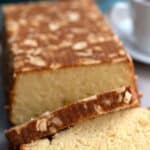
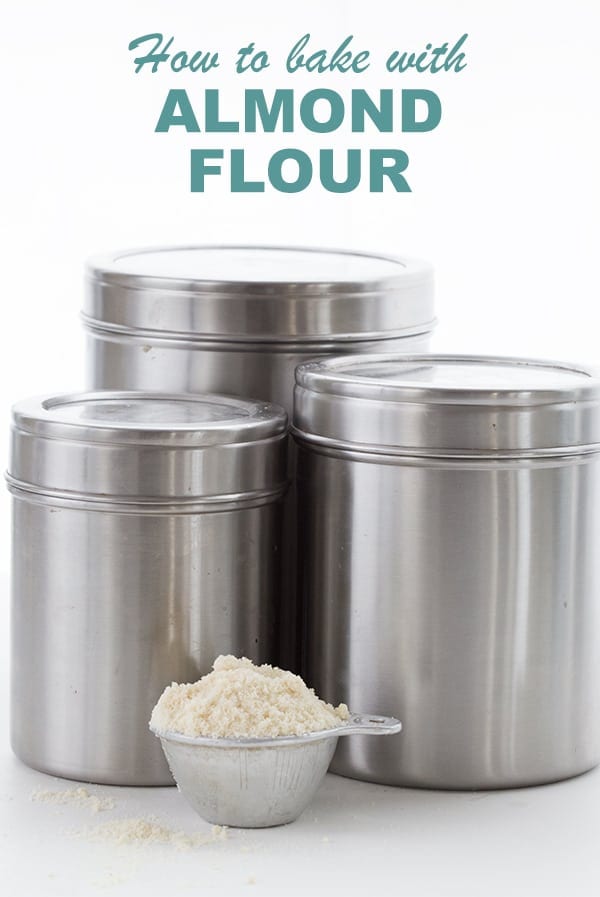

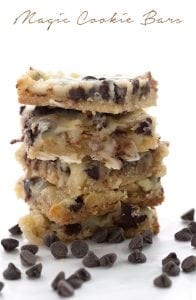
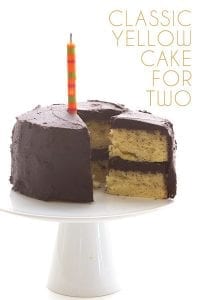
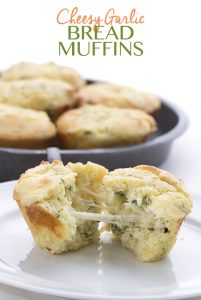
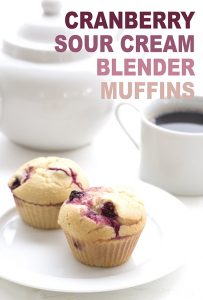
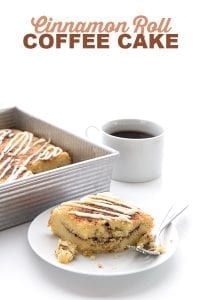
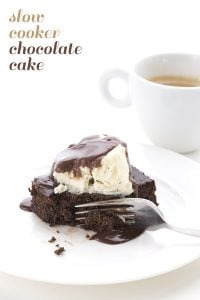
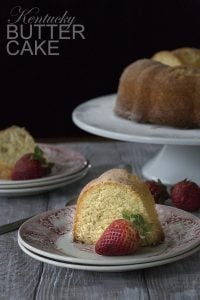


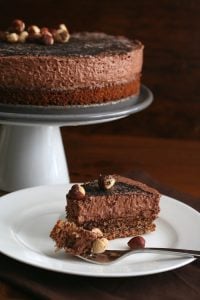




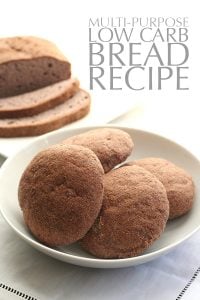
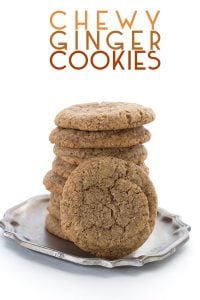
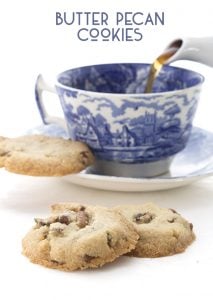

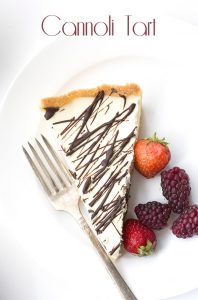

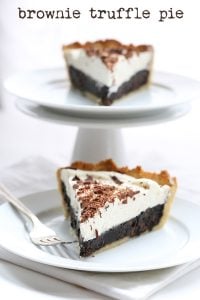


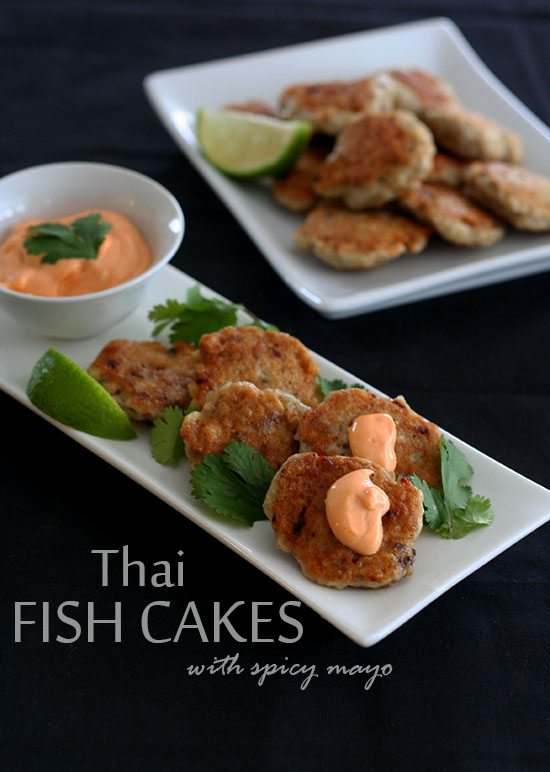











I love your videos and your recipes because you are so down to earth and unpretentious. I’m new at this low-carb cooking and can’t wait to get more confidence in almond baking. we don’t seem to have as many outlets in Western Australia that sell a lot of your ingredients that you suggest. I’ll have buy on Amazon if I can.
I can sometimes suggest replacements but I am not alway sure what you can get there!
are there any changes that need to be made when baking above 5,000 ft?
I don’t see many entries saying to modify if at altitudes that high.
Yes! It’s the same things you do for conventional baking. I don’t bake at altitude but I know that King Arthur Baking has a really good tutorial on it.
Thank you so much for explaining all about the different flours … I’m so new at wanting to try keto recipes it ain’t even funny and I really do get so confused ….
I really am not a very good baker even with flour …lol …so I follow the recipes to a T .
So thank you for explaining about the scoop and level off without packing it in that really helped out alot … I really cannot wait to experiment with some brownies first …
I bought my almond flour , and monk sugar and now I received my zero chocolate chips … I cannot wait to try your other recipes also …Have a Great October ….
Thanks for this info! Question: I’ve baked several keto desserts, for example, pound cake with almond flour, but even though I always used the fine ground almond flour, I’ve had problems with the cake being very oil. For example, yesterday I converted a Victoria Sponge cake recipe and used the equivalent almond flour instead of regular flour, but used the amount of butter called for in the recipe. Do you need to reduce the amount of butter in these recipes? Thanks!
This is a very helpful post! I am curious about why the Blue Diamond Almond people (https://www.bluediamond.com/blog/baking-with-almond-flour) say never to use baking powder with almond flour. It seems to work beautifully for you, however. I am confused about the best leavening agent.
I have NO idea why they say that, but they are very very wrong, I can tell you. There is no reason not to use baking powder or baking soda. That’s absolutely ridiculous! And every keto blogger I know uses baking powder without issue. Without it, the baked goods won’t rise as well. If you use too many eggs, they will be eggy and rubbery.
My tutorial on baking with almond flour is far more comprehensive than theirs: https://alldayidreamaboutfood.com/low-carb-basics-baking-with-almond-flour/
Thank you! I’ve been searching for exactly this kind of almond flour baking information for a long time! Very helpful!
I would like to see the more nutritional facts as I am a diabetic and have heart disease. I need to see the cholesterol in the baking. thank you
You can use online calculators to get the information you need.
This Carolyn. I’ve been experimenting with almond flour since learning um gluten/wheat sensitive over 20 years ago (where’d the time go??????). Two things I’ve found helpful:
1. Allowing batter to sit at room temp for a bit improves texture
2. I’m allergic to corn which is in most baking powders, so for leavening I use baking soda and cream of tartar.
Although I’m terrible about measuring ingredients, I do look forward to trying some of your recipes.
Hi. I tried your devils food cake recipe, but made 9 jumbo cupcakes instead of cake layers. I was disappointed as the cupcakes deflated (middles sunk) after I got them out of the oven.
I used your specified ingredients and brands and measured CAREFULLY – but I am new to keto baking. Cupcakes were super crumbly. They were bitter (too much Dutch chocolate?) Batter seemed too thick. Appreciate your comments!
Something went wrong, for certain, if the batter was very thick and they were dry and crumbly. What brands of almond flour and sweetener did you use? Also… are you at elevation at all?
Hi, I’m just thinking of starting a keto way of life. Thank you so much for your amazing information.
I use a Thermomix and try to make everything from scratch. Can I make my own blanched almond flour, would it be fine enough?
I eagerly await your answer and look forward to starting my keto journey.
Many thanks,
Penny
No, really there is no way to make it fine enough at home.
I loved you article on the different flowers. Started keto a year ago. Lost 40 lbs.
Over holidays I gained 6 lbs.. back on keto. I’m 76 active and it’s just my husband and I and our new toy poodle Siri. My husband is borderline diabetic and this has been good for him as well.
I love to cook and enjoy keto meals. But my husband has to have his dessert.
He enjoyed all keto desserts especially cheese cake.
I will try and read all of your articles. I want to understand it better.
Thank you, your explanations are wonderful and easy to understand.
Mary
Is this information covered in one of your books? I would love to add this at my learning library. Is it available to print out?
All of this and a lot more is in The Ultimate Guide to Keto Baking! https://amzn.to/2n0XQWf
If I want to use Almond Flour instead of regular Flour would The amounts be The Same.
Did you read this post? I already addressed that! 🙂
Caroline, this is absolutely wonderful thank you. I am so serious about that! My family will be so incredibly happy. I’m going to try to print this article because your expert advice can’t be beat, I am a 68-year-old woman who has lost 70 pounds on keto and will continue especially now! ????
Can you please tell me if you sift almond and coconut flour before measuring for a recipe as you do with most former white flour baking?
I haven’t seen this addressed anywhere and not sure yes or no to do it.
Thank you so much for all you do to help all of your followers on this low carb, no to low sugar lifestyle. It’s been a lifesaver and so helpful, and can’t forget fun ????
Love your humor.
If the recipe does not specify to sift, then you don’t sift. Just like conventional recipes.
I baked “JJ Virgin’s Blueberry Muffin recipe so my mom who’s diabetic can enjoy a “dessert” at a family birthday party today (her trigger is cake!). But between my dry ingredient substitutions: almond flour instead of regular flour; almond milk instead of coconut milk; coconut MCT oil instead of summer other oil- they still aren’t rising after in the preheated oven at 350 for over 30 mins ???? The batter was a tad on the soupy side & my measuring was not SUPER precise. Ideas?
Ideas? Sure… use my blueberry muffin recipe instead. Never heard of JJ Virgin but I am diabetic and all my recipes are appropriate for persons with diabetes. https://alldayidreamaboutfood.com/keto-blueberry-muffins/
You simply can’t sub almond flour for regular flour, as this article is very clear about.
I make those Italian rainbow cookies every year for the holidays. I usually use the white all purpose flour. I wanted to try switching to almond flour but am nervous because the effort put in to making them, I would be upset if they didn’t come out right being I ship them out to a few people . I wanted to ask if I should add an extra egg to play it safe? This link is for the recipe that is pretty close to how I make them. Any suggestions/tips from you changing the bleached self-rising white flour to almond flour would be greatly appreciated?
Forgot to put link for recipe I use lol . https://www.tastingtable.com/cook/recipes/italian-rainbow-cookie-recipe
I know the ones you mean… I’d really have to play with it myself to see what worked!
Can you use vital wheat gluten with almond flour instead of protein powder?
I can’t honestly say, since I don’t use that very often. You are welcome to experiment!
Hi, I thought you may find something I do a useful tip. When I make family sized cakes, either round or loaf shaped, I use greaseproof liners and put them inside round or loaf shaped pans. This means no need to grease the pan. I get them from eBay or Amazon or a UK kitchenware shop online called Lakeland.
When baking at high Altitude, what adjustments should be made?
All the same adjustments for regular baking.